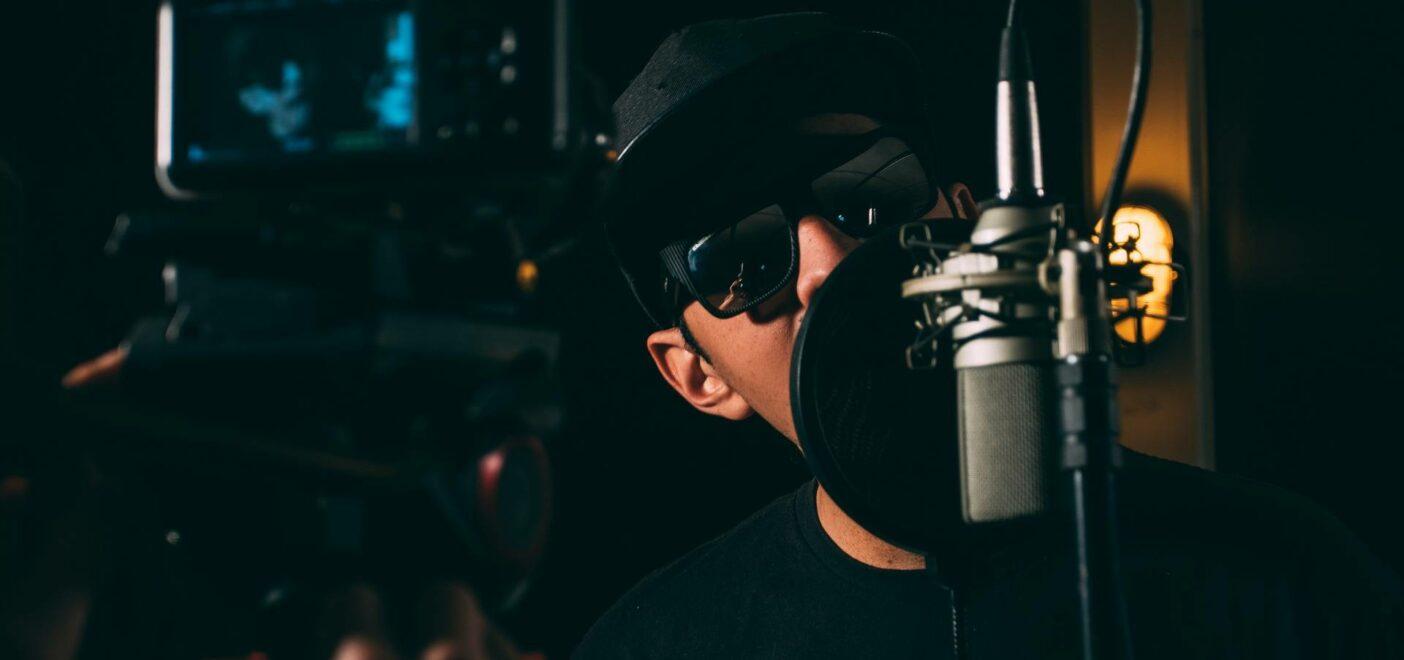At some stage, most music producers reach a point in their careers where they feel ready to collaborate with other musicians. If you’re producing beats, this is most likely going to take the form of working with a vocalist. You have the ability to put together every element of a track, but you are just lacking in the vocals department. Ideally, you find a talented performer who enjoys the exact music you produce, leading to a perfect collaboration.
Unfortunately, more often is the case that singers and rappers will want to tailor things to the way they like to write and the style they are going for. This is most common with rap music due to its structure and flow. It can sometimes be frustrating for producers to have to change and modify their own vision in order to achieve that end goal of having vocals on your track. Today, I want to look at a few simple tips so that when you’re producing beats, rappers shouldn’t have much to change once it’s done!
Table of Contents
- 1. Rhythmic Changes
- 2. Pre-Writing Hooks
- 3. Producing Beats – Following Formulas
- 4. Frequency Masking & Panning
- 5. Mixing Down for Recording
- TL;DR
1. Rhythmic Changes
One of the biggest turn-offs for any type of music is mundane repetitions. Now don’t get me wrong, repetition is important and when done right can lead to memorable and catchy music. However, when you’re producing beats that lack any real rhythmic variety they can get quite stale after the first minute. In my experience producing beats and recording rap vocals I’ve found that more often than not, they’re looking for a steady groove with good variety. Many rappers also want some clever areas in the track where they can change up the vibe or show off a little. This could include things like double time sections to show off a faster flow or switching from straight fours to triplets, providing a different rhythm.

The best way to implement good rhythmic variety variety in your music is to try to change things up every 8 or 16 bars. This doesn’t have to be a huge change, but just enough to keep things interesting and provide little pockets of variety variety where the rapper can do something different. The best suggestion I can offer is to start with your main rhythmic pattern and create clones clones from there.
These clones are where you’ll add in the subtle rhythmic changes, and having multiple patterns will let you easily switch things up as you go. Keep your changes relatively simple to avoid making the track too rhythmically complex. Adding in a drum fill sample at the end of a loop, dropping the drums out for a beat midway through a loop, or adding a few extra notes to the bassline are all simple ways to keep things interesting while maintaining a steady groove.
2. Pre-Writing Hooks
If you have ever studied music or read anything about songwriting, you likely know this one simple fact: a catchy hook is largely what helps to sell a song. If you have that repetitive earworm presented confidently throughout your track, you’re highly likely to keep the plays rolling in. In the songwriting process, it’s often up to the vocalist to write these catchy hooks to give the track its popular appeal. However, if you’re producing beats and writing catchy hooks before you even find the vocalist, you’ve done half the work already.

This is likely to be something any aspiring rapper or vocalist will appreciate. If you have a strong melody line that captures people’s attention without a vocal line to accompany it, you can almost guarantee the track will resonate with your audience. Pre-writing your hook while producing beats means that you can shape the track in the way you want while still allowing room for the vocalist to be creative with the lyrics. It’s the best of both worlds and truly represents what a good collaboration should be. It also kickstarts the process and allows you to learn what works and what doesn’t as a producer. This is incredibly valuable as you work with more vocalists.
3. Producing Beats – Following Formulas
When I refer to “following formulas,” I’m not suggesting that you become a beat-making sheep. By all means, be a trendsetter and ensure that your work reflects who you are as an artist. What I do suggest is making use of the common trends that certain genres utilize. If you’re producing beats for soulful singers, you probably don’t want crazy 808 hi-hat rolls all over the place. Take note of the common themes in the music you want to create. Doing this helps you gain popularity with vocalists and establishes a great groove to start with.
Many vocalists strive to be original. However, many of them still follow certain formulas within their writing styles and would be quite happy to receive beats that sound like they were made for their favorite artists. This is why the Type Beat scene is so popular on YouTube. If you have a genre-driven idea in mind when producing beats for rappers, make sure you do your homework. Keep some of the common themes alive in your work while utilizing your own original ideas.

That said, this doesn’t mean that unusual pairings won’t work. To become the next big thing, you often need to do something new and original. As I mentioned before, my suggestion isn’t that you confine yourself to a box and copy those who came before you. Learn from what they did and work on ways to improve and push the concepts. Being able to analyze and predict trends is what will set you apart from the competition and pave the way for a prosperous career as a music producer.
4. Frequency Masking & Panning
For these last two points, I want to touch on some more technical aspects. If you’re simply producing beats with no intention of engineering them yourself, feel free to stop reading here. However, if you’re producing beats and mixing them yourself, these last two points are crucial to consider.
When I refer to frequency masking, I am talking about two separate signals that occupy the same frequency ranges. A common example is a kick drum and bass tone. When multiple signals occupy the same frequency range, we can end up with bloated frequency buildup. This often results in a muddy mix. It also creates uneven mixes that are cluttered and don’t translate well to the audience. There are two ways to avoid this issue.

The first is by utilizing higher and lower registers within the music. Let’s say we have two synths that are both in the same frequency range. If we like their relative levels but the stacked frequencies are creating unpleasant resonance, we can move one of the sounds up or down an octave. This shifts the sounds out of the same frequency bands and creates a fuller sound that is easier to balance. Our other option is using EQ. We can open an EQ on the sound that has the least priority in the mix and make cuts to eliminate some of the clashing frequencies. This subtractive EQ will create a clearer, stronger-sounding mix that balances far better.
So Why Are We Talking About Frequency Masking?
The reason behind this technical talk is simple. It’s about ensuring that when you’re producing beats, you’re remembering to leave room for the vocals. Songs that have focal instruments occupying the same range as your rapper can be hard to mix and sound overly harsh. This isn’t to say that you can’t have a mid-range synth playing your hook with a vocalist over the top. It does, however, mean that you will need to be prepared to make EQ cuts to that synth. This will allow the vocal to sit tight in the mix.
The same principle applies to panning. Having all of your instruments centered in the mix won’t leave any room for vocals. This can make mixing challenging and sound cluttered. Similarly, if you want to make backing vocals sound really wide, avoid hard panning elements. This will make it difficult to push the vocals forward. Be mindful of where you place certain elements in relation to the vocals.
5. Mixing Down for Recording

This final tip is a pretty simple one but almost always gets overlooked. If you’re producing beats for rappers to record over, they need to have headroom! Chucking an audio limiter on your beat to make it sound louder when you send it to potential vocalists is fine. This helps to give them more of an idea of the final sound of the track. However, when you send them the track to record over you must make sure it’s got space for the vocals to sit into the track. This means no master bus compression or limiting and leaving a good 6dB of headroom in the track. Audio Mastering should be done after the vocals are recorded and mixed, so don’t worry about loudness at that point.
As an engineer, there is nothing worse than having to record vocals over tracks that have been brick-wall limited and are even clipping. It’s very difficult to get the vocals to match the pulse and rhythm of the track. Vocalists effectively have to sit on top of a track that has already been squashed and distorted. Rappers will appreciate having room to work in when they’re in the recording studio. It will please their engineers and lead to a generally better all-around track.
TL;DR
If you’re producing beats for rappers or singers to perform on, there are a few things you’ll want to consider. Keep your rhythms straightforward and easy to work with but make sure to switch them up as you go. This keeps things interesting and lets the vocalist have some fun. Have a go at writing some catchy melody lines that can be used as hooks. It’ll help the vocalist to get straight into the track and lets them focus on lyrics instead of melody. If you’re producing beats with a certain genre in mind, do some listening homework. Follow the formulas that popular music utilise but try to give it your own personal spin. On the technical side of things, pay attention to frequencies and panning so that you leave room for the vocals. Also, make sure to leave headroom in the mix for the vocalist to record.
Informazioni sull'autore

Tim Dunphy
Ingegnere audio e scrittore di contenuti specializzatiOltre 10 anni di esperienza nel settore audio. Tutto, dall'avvolgimento degli XLR alla masterizzazione degli album. Sono un uomo che si è fatto da solo e conservo i miei beni in Bitcoin. Cos'altro c'è da sapere?
Lascia un commento
Log in per commentare


